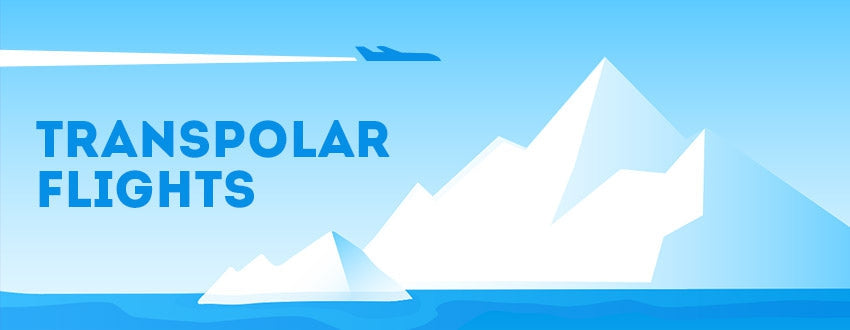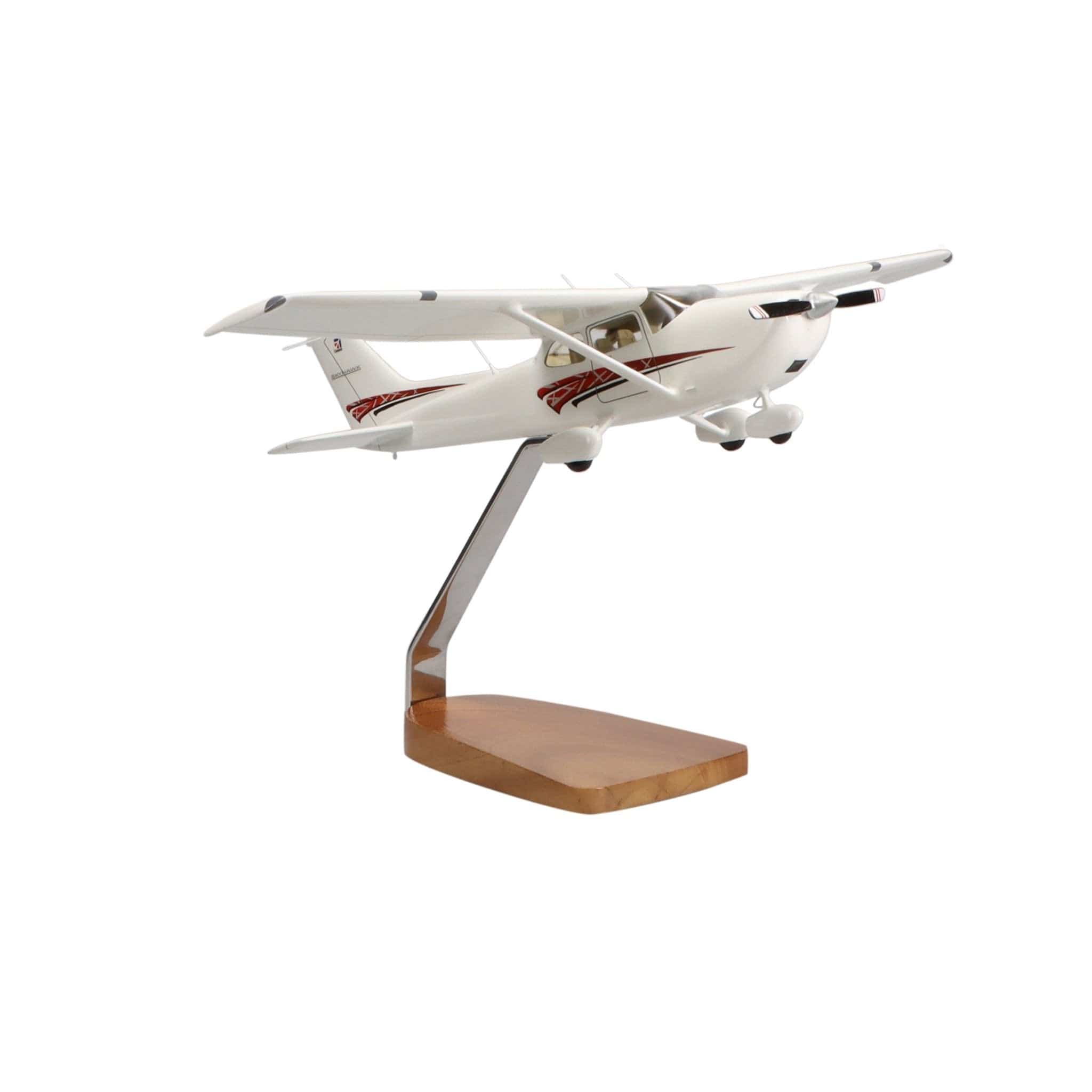Table of Contents
Do Planes Fly Over the North Pole? (Transpolar Flights)
We have been fooled by the atlas.
Its two-dimensional presentation of Earth causes us to think about international travel from a west to east perspective. Hong Kong, for example, is east of New York.
The fastest route between those two points, however, is not along lines of latitude, following the rotation of the Earth. Instead, it’s to fly over the North Pole.
For modern airliners, flying over the North Pole has become a relatively mundane affair. Many carriers take advantage of what is sometimes called “Santa’s Shortcut” as a way to cut flight hours and fuel costs.
But transpolar flight wasn’t always so common, or so safe.
Race to the North Pole
The North Pole has long fascinated explorers of all sorts, and aviators were no exception.
Salomon Andree, a Swedish engineer with a fitting walrus-like mustache, executed the first known attempt to navigate the North Pole by air, doing so in a hot air balloon in 1897. Andree and two doomed crew members launched from Svalbard, an archipelago in the North Atlantic.
Just three days into the expedition, the balloon crashed down onto polar ice around roughly the 83rd parallel. After wandering aimlessly around the frozen wasteland for several months, each crew member perished, their whereabouts unknown.
At least two other airborne expeditions proved unsuccessful – but not fatal, at least – until 1926. That year Lt. Commander Richard Byrd of the U.S. Navy successfully flew over the North Pole in a Fokker Trimotor. Byrd flew out of Svalbard and landed there 15 hours later.
Like the Space Race that came several decades later, however, the Russians challenged American authority in the realm of Arctic aviation.
In 1937, Valery Chalov completed the first true transpolar flight, taking off in Moscow and landing in Vancouver, Washington, 63 hours and almost 5,500 miles later.

The First Commercial Flight
Flying over the North Pole wasn’t easy.
If you had trouble, there was nowhere close to land.
There was also the problem with navigation.
The geographic North Pole and magnetic North Pole are more than 600 miles apart. Get in between them and your compass does some rather unusual things, like bounce back and forth or point south when it should point north.
By the 1950s, though, improved navigational technologies and better maps made flying over the top of the world a lot easier, opening up the possibility for commercial routes.
In 1952, the Scandinavian carrier SAS flew a Douglas DC-6 from Los Angeles to Copenhagen in an experimental flight. Two years later, after receiving approval from American aviation authorities, the company began ferrying passengers up and over the pole between those two cities.

The Arctic Evolution
Still, though, flying over the North Pole remained an uncommon occurrence.
Restricted air space over the Soviet Union limited flight during much of the Cold War. Furthermore, the U.S. restricted those flights to planes with more than two engines. Making the flight in a twin-engine aircraft was deemed too dangerous.
Aircraft improved, though. And in 2011, the U.S. relaxed regulations on how far twin-engine planes can operate from a nearest airport in case of an emergency. This opened up the North Pole to them.
Flying over the North Pole between Hong Kong and New York cuts flight time by two hours.
Many travelers report it as being more enjoyable as well.
Pilots descend to altitudes of around 10,000 feet over the Arctic, to prevent fuel from freezing, resulting in up-close views of a part of the world most people would never otherwise see.
Surprisingly, flying over the North Pole isn’t just for relatively northern departures and arrivals either.
Emirates Airlines goes over the top from L.A. to Dubai, a 17-hour flight.

An Invisible Risk
There is one disadvantage to polar navigation – solar radiation.
Most solar radiation is reflected by the Earth’s magnetic field. At the poles, however, the field converges into the Earth, allowing solar radiation an opening into the atmosphere.
No single polar flight exceeds safe radiation levels, so most passengers are safe.
But repeated exposures by flight crew could constitute a risk. In fact, airline pilots are exposed to more radiation than most nuclear power plant workers.

What About Antarctica?
In 1929, an American explorer left the Ross Ice Shelf for an 18-hour flight to the South Pole and back, marking the first flight of its kind in history.
Any guesses on that young man’s name?
Hint, he was a Navy pilot. Last name kind of sounds like he was born to fly.
You guessed it. Richard Byrd.
In 1966, a crew flew a Boeing 707 Jet around both poles in a single effort. The first-of-its-kind flight started and ended in Honolulu. It covered 26,275 miles in five legs and 62-and-a-half hours, including stops in London, Lisbon, Buenos Ares and Christchurch.
The Polecat crew involved five pilots, three flight engineers and three navigators. In all, 40 people were on board.
Still, the South Pole still remains pretty much plane-free.

Why No Traffic?
First, the Southern Hemisphere is less populated and has much less land mass. There just aren’t as many flights in the Southern Hemisphere, so there isn’t as much demand for trans-Antarctic flights.
Some flights between Australia and South America and between Australia and South Africa pass near the Antarctic coastline, however.
But, demand aside, the Antarctic is still considered by most commercial airlines to be too dangerous. Even compared to Arctic flight, there are fewer diversion airports within a reasonable distance.
The weather and flying conditions in Antarctica are also especially treacherous.
In 1979, Air New Zealand Flight 901 crashed into the side of Mt. Erebus, a 12,500-foot volcanic mountain near the 77th parallel. The disaster killed 257 passengers and crew.
Some privately chartered planes fly over Antarctica from Australia for the sole purpose of sightseeing.
The Problems with Flying Over North and South America

Considering the sheer number of airports and traffic routes covering North and South America, you might be fooled into thinking it’s among the easiest places to fly. However, that’s not quite the case.
For starters, there is all that traffic—thousands of planes cross those continents on a daily basis. Plus, there’s no continuity in air safety rules in some areas. Latin America has gotten a lot of flack for its aviation safety issues, causing many flights to find another path to where they’re going.
Plus, planes are only allowed to be so far from diversion airports, and due to government and other issues, there may not be as many that are accessible to every plane in South America. Because of this, many planes choose to travel over the ocean near enough to diversion airports without having to get caught up in the traffic.
Polar Flight FAQs
Can planes fly over North Pole?
Yes, planes can fly over the North Pole. Many flights from North America to Europe and North America to Asia, and vice versa, cross the North Pole in an effort to cut flight time and save fuel.
Is flying over Antarctica illegal?
Flying over Antarctica is not illegal. Nonetheless, few commercial airliners do it.
Why do planes not fly over the South Pole?
The weather is especially treacherous, and there are few diversion airports available in case of emergency. Furthermore, less people live in the southern hemisphere, meaning fewer flights and less demand for polar routes.








3 comments
Joanna michaelides
All i wont is to now how can i go and see nap lane wear santa used to live
A. McHale
The straightest line between Anchorage and St. Petersburg is almost directly on top of the North Pole.
B. L. Whelan
Place a piece of string on a globe between Seattle and London and you will see the shortest distance is to fly far to the north. It’s called the great circle route.